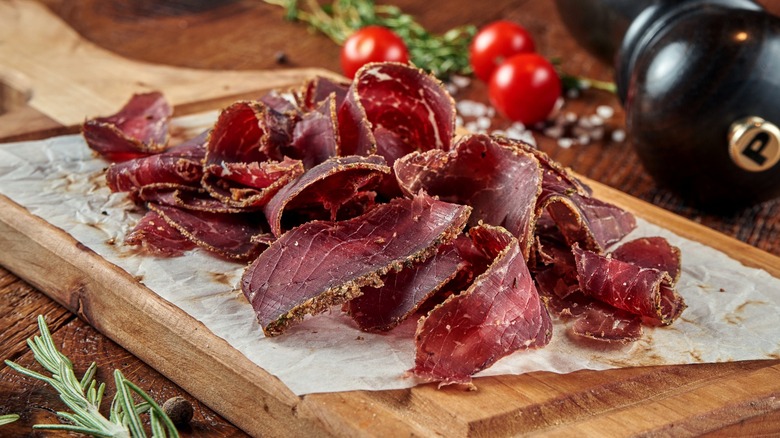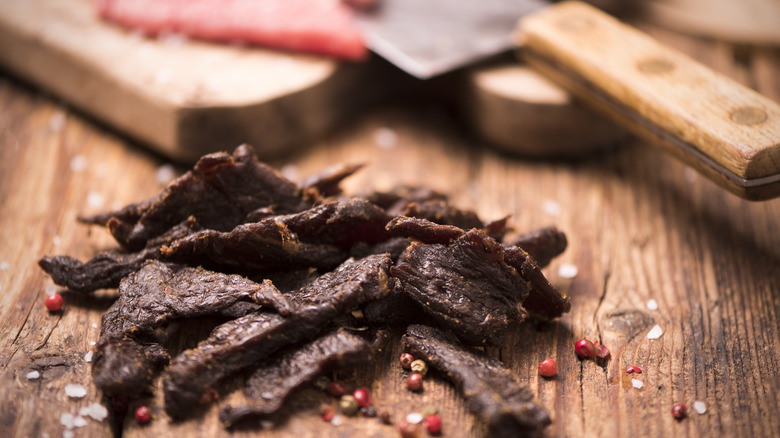How You Cut The Beef For Jerky Makes A World Of Difference
When it comes to making beef jerky, the way you cut the meat is not just a step in the process. It's the foundation of how your jerky turns out. This isn't about fancy techniques or chef-level skills. It's about understanding the basics of meat grain, which can drastically impact the texture, flavor, and overall eating experience of your jerky. Beef muscle fibers align in a particular direction, and this is what we refer to as the "grain." When preparing jerky, you have two choices: cut with or against the grain.
Cutting with the grain means slicing the meat in the same direction as the fibers. This method is ideal for those who prefer chewier jerky. The resulting pieces are tougher and require a good jaw workout, which some jerky enthusiasts love. On the other hand, cutting against the grain involves slicing perpendicular to the direction of the muscle fibers. This technique produces a tenderer jerky, which is easier to bite and chew. It's perfect for those who don't want to struggle too much with their snack. The difference between these two methods is substantial in terms of texture. Moreover, the direction of your cut influences how the jerky dries. Cutting against the grain exposes more of the muscle fiber, allowing the meat to dry more quickly and evenly. This can lead to a more flavorful piece of jerky.
Tips for cutting beef for jerky
Beyond understanding the meat grain, there are other important tips to consider when cutting beef for jerky. One of the first steps is trimming the fat. Fat does not dry out like meat does and can make your jerky go bad sooner by becoming rancid. Start by selecting lean cuts of beef, such as top round, bottom round, or sirloin tip, then carefully trim any visible fat to ensure a more consistent and enjoyable jerky.
The thickness of your beef slices is another critical factor. The ideal thickness for jerky is ⅛ to ¼ inch. This isn't an arbitrary number. It's about ensuring even drying and cooking. If the slices are too thin, they can become overly tough and lose flavor. If they're too thick, they may not dry evenly, leading to an inconsistent texture and potentially undercooked areas. Consistent thickness also ensures that all your jerky pieces are ready at the same time.
Lastly, using a sharp knife is vital for clean, precise cuts. A dull knife can tear the meat fibers, leading to a rough texture in the finished jerky, and produce thick slices, not to mention the safety concerns. A sharp knife helps maintain the integrity of the meat, easily achieves uniform thin slices, and avoids accidental cuts. By following these tips, you can create delicious, homemade jerky that suits your taste perfectly.

